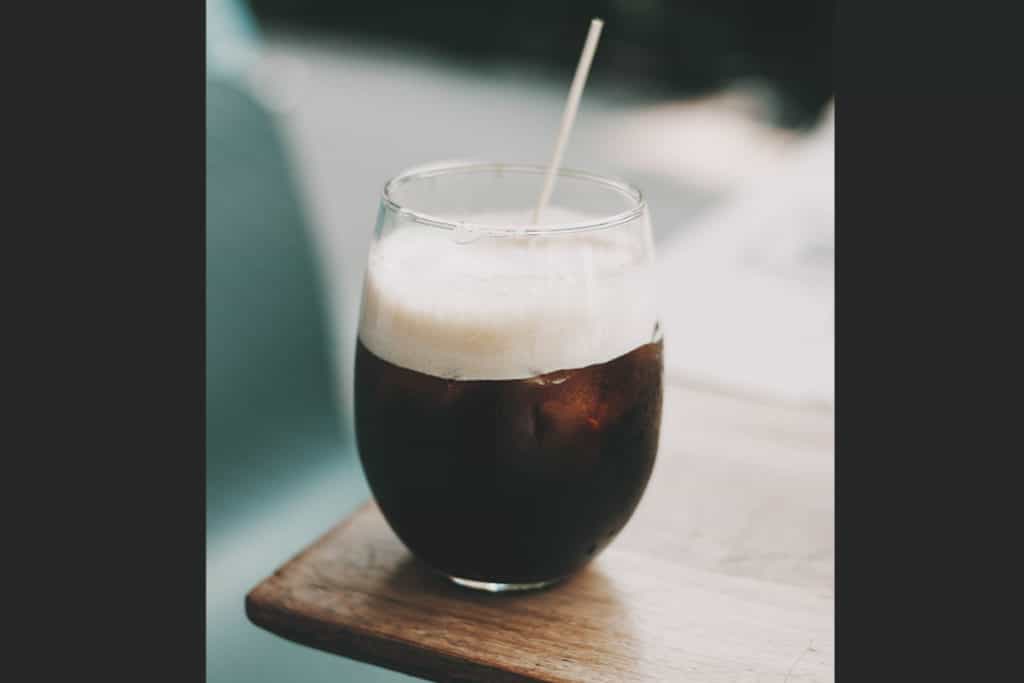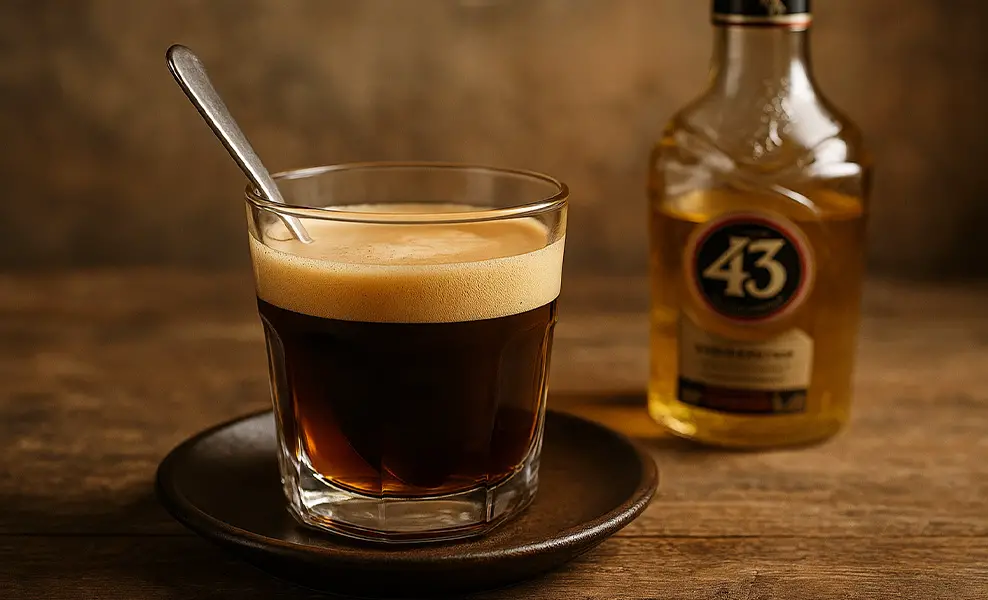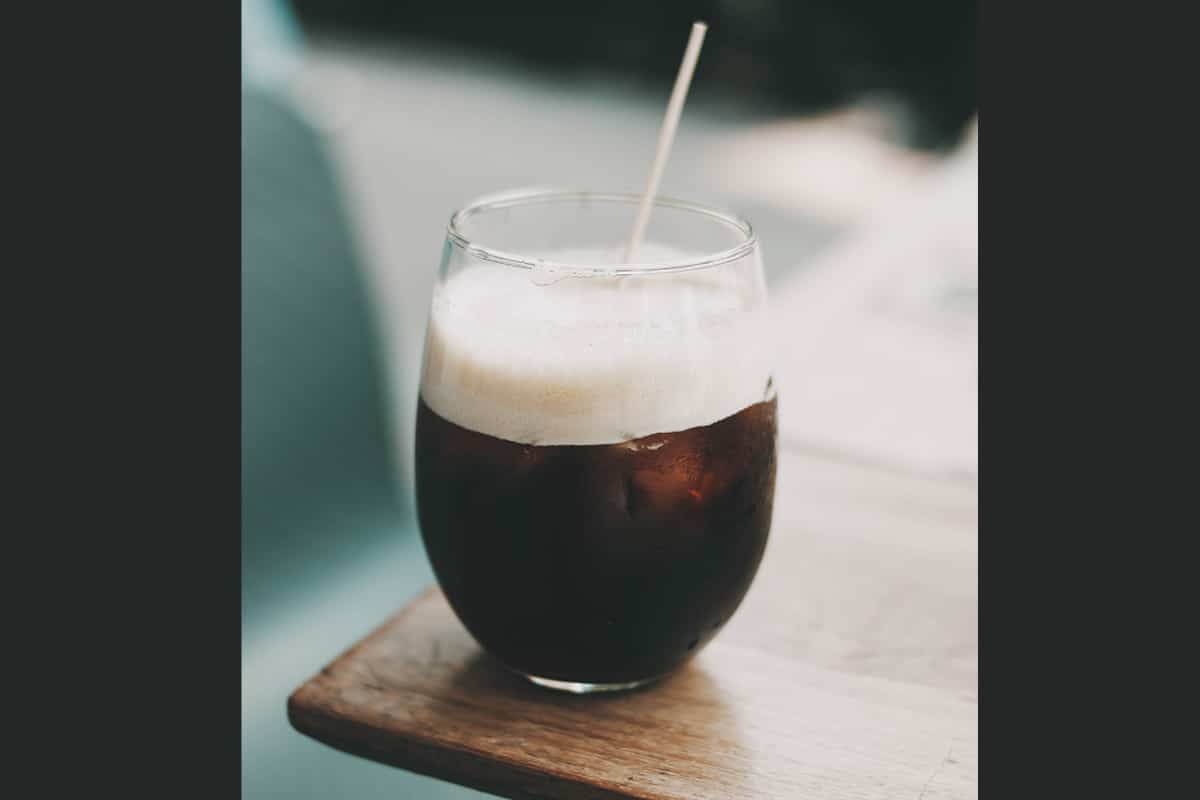
The Carajillo, a bold Spanish coffee cocktail, pairs the rich kick of espresso with the warmth of liquor, typically brandy or rum. Served in a small glass, often garnished with a twist of lemon peel, this drink is a cultural staple in Spain, balancing coffee’s bitterness with spirited depth. Its origins stretch back to the 19th century, and it remains a favorite from morning pick-me-ups to evening nightcaps.
Whether you’re enjoying one in a Barcelona café or mixing it at home, the Carajillo’s versatility and flavor make it a timeless classic. Here’s a look at its history, recipe, variations, and cultural role, with a chart comparing the flavor intensity of different liquor choices.
A Taste of History
The Carajillo’s origins are debated, but one theory ties it to 19th-century Catalonia, where workers mixed coffee with liquor for a quick boost. The name may derive from “coraje” (Spanish for courage), as the drink was thought to fortify laborers.
Another story points to colonial Cuba, where Spanish troops combined coffee with rum, calling it “carajo” (a slang term for boldness). By the early 20th century, the Carajillo became a staple in Spanish cafes, especially in Catalonia and Valencia, evolving into a refined cocktail served hot or cold.
In Latin America, particularly Mexico, the Carajillo took on new life, often featuring local spirits like mezcal or Licor 43, a citrusy Spanish liqueur. Its spread reflects Spain’s coffee culture meeting global cocktail trends, with bartenders today experimenting while honoring its roots. The drink’s adaptability has made it a bridge between tradition and innovation, enjoyed in both rustic taverns and upscale bars.
The Classic Recipe

The Carajillo is simple yet customizable, combining espresso and liquor with optional sugar or garnishes. Here’s the traditional method:
- Ingredients:
- 1.5 oz brandy or rum
- 1 shot (1 oz) hot espresso
- 1 tsp sugar (optional)
- Lemon peel for garnish (optional)
- Instructions:
- Pour the brandy or rum into a small heat-resistant glass or cup.
- Add the hot espresso and sugar, if using.
- Stir gently until combined.
- Garnish with a twist of lemon peel, if desired.
- Serve immediately, hot, or pour over ice for a chilled version.
This recipe delivers a bold, warming drink, with espresso’s bitterness softened by the liquor’s depth. For a modern twist, some bartenders shake the mixture with ice and strain it into a chilled glass, creating a smoother, cocktail-like texture. The ratio of coffee to liquor—typically 1:1 or 1:2—can be adjusted to taste, letting you dial up the coffee’s intensity or the liquor’s warmth.
Flavor Variations by Liquor
The Carajillo’s flavor depends heavily on the liquor, as shown in the chart below, which compares the intensity of three popular choices: brandy, rum, and Licor 43. Brandy, distilled from wine, offers a smooth, refined taste with oak, vanilla, and caramel notes, complementing espresso’s richness.
Rum, made from sugarcane, brings a sweeter, tropical profile with molasses and spice, adding a lively kick. Licor 43, with its 43 ingredients including citrus and herbs, softens the coffee’s edge, creating a dessert-like sip.
Sugar balances the espresso’s bitterness and the liquor’s bite, while a lemon peel adds a zesty lift. You can experiment with whiskey for a smoky edge, vodka for a neutral base, or Kahlúa for a sweet, coffee-forward twist, though purists favor brandy or rum for their traditional depth. The chart illustrates how brandy delivers the most intense flavor, followed by rum’s balanced sweetness, and Licor 43’s milder, smoother profile.
Regional and Modern Twists
In Spain, Carajillo recipes vary by region. In Catalonia, it’s often served hot with brandy, sometimes ignited briefly to caramelize the flavors, creating a dramatic presentation. In Valencia, rum is preferred, and iced versions are popular in summer.
Andalusia might add a splash of anise liqueur for a licorice note. In Mexico, the Carajillo is a modern darling, typically made with Licor 43, shaken with espresso and ice for a frothy, dessert-like drink. Some Mexican bars use mezcal for smokiness or add horchata for creaminess, reflecting local tastes.
Globally, bartenders have embraced the Carajillo’s simplicity. In the U.S., you might find a “Carajillo Americano” with bourbon, while in Italy, an amaro-based version nods to local bitters. Coffee shops in cities like London and Sydney feature it on menus, often using single-origin espressos to highlight the coffee’s nuance. These adaptations keep the Carajillo fresh while preserving its core: a bold coffee-spirit duo.
Cultural Significance
In Spain, the Carajillo is a daily ritual, especially in Catalonia, where it’s a morning staple alongside pastries or a mid-morning break with tapas. It’s also common after meals, served as a digestif or nightcap in bars.
Unlike Italy’s quick espresso shots, the Carajillo encourages lingering, sparking conversation over its warmth. In Mexico, it’s a trendy evening drink, often enjoyed at upscale restaurants or cocktail bars, blending Spanish heritage with local flair.
The drink’s flexibility—no strict rules on timing or ingredients—makes it accessible. Some Spaniards start their day with a Carajillo for a gentle buzz, while others save it for evenings to unwind. In Latin America, it’s a symbol of shared history, connecting colonial pasts with modern tastes. Its presence in cafes, from rustic Spanish tabernas to sleek Mexico City bars, underscores its role as a social catalyst.
Tips for the Perfect Carajillo
For the best Carajillo, use fresh, high-quality espresso—ideally a medium or dark roast to match the liquor’s intensity. Adjust the coffee-to-liquor ratio to your preference: more espresso for a coffee-forward drink, or more liquor for a boozier kick.
If adding sugar, dissolve it in the espresso first to avoid graininess. For iced versions, chill the glass beforehand to keep the drink crisp. Experiment with garnishes like orange peel or cinnamon for a personal twist, and don’t shy away from trying new spirits to find your ideal mix.
Why It Endures
The Carajillo’s appeal lies in its simplicity and adaptability. It’s quick to make, requiring just a few ingredients, yet offers endless variations. Its balance of coffee’s boldness and liquor’s warmth makes it a crowd-pleaser, whether you’re a caffeine enthusiast or a cocktail lover.
From its simple beginnings among workers to its place in modern mixology, the Carajillo captures Spain’s love for coffee and conviviality. Next time you’re craving a drink that’s both energizing and relaxing, mix a Carajillo.

